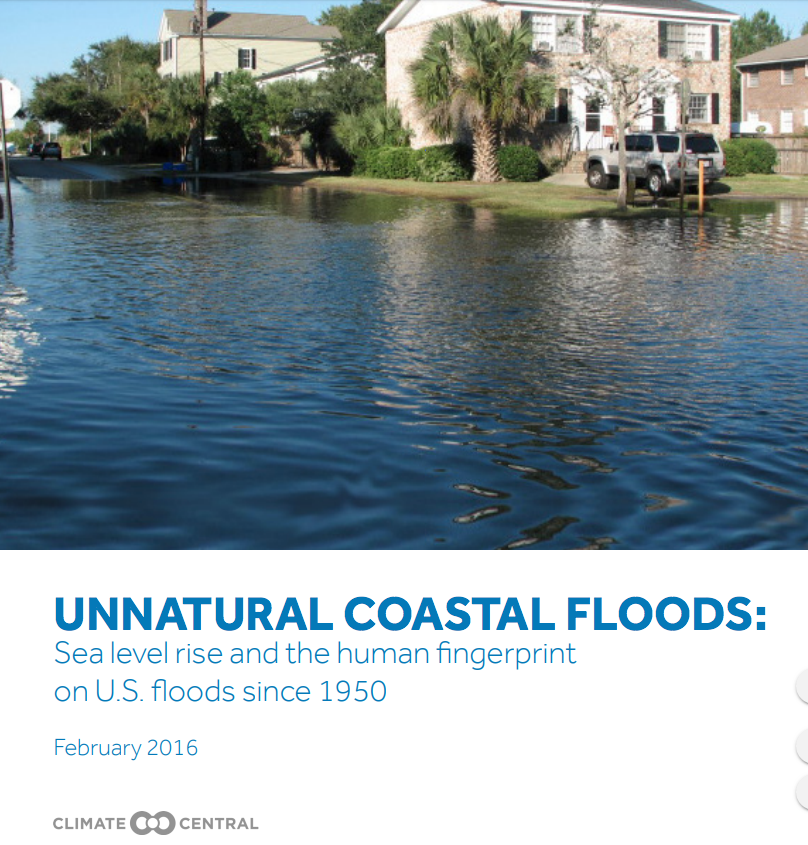Projects & Reports > UNNATURAL COASTAL FLOODS: Sea level rise and the human fingerprint on U.S. floods since 1950
Human-caused climate change is contributing to global sea level rise and consequently aggravating coastal floods. This analysis removes the assessed human-caused component in global sea level from hourly water level records since 1950 at 27 U.S. tide gauges, creating alternative histories simulating the absence of anthropogenic climate change. Out of 8,726 days when unaltered water level observations exceeded National Weather Service local “nuisance” flood thresholds for minor impacts, 5,809 days (3,517-7,332 days, >90% confidence interval) did not exceed thresholds in the alternative histories. In other words, human-caused global sea level rise effectively tipped the balance, pushing high water events over the threshold, for about two-thirds of the observed flood days. The fraction has increased from less than half in the 1950s, to more than three-quarters within the last decade (2005-2014), as global sea level has continued to rise. Also within the last decade, at sites along Florida’s Atlantic coast and the Keys, as well as in San Diego (La Jolla), Seattle, and Honolulu, more than 90% of observed flood days would not have occurred if the central estimate for anthropogenic sea level signal were removed. The same applies to more than half the flood days at each of the 25 out of 27 study gauges averaging more than one total nuisance flood day per year since 2005. Overall, gauges averaged 12.2 flood days per year over this period. In the central estimate, the human-caused increase in global sea level also accounts for more 80% of the increase in nuisance flood days between the period 1955-1984 and the period 1985-2014 – periods across which flood frequency tripled for study gauges collectively. Anthropogenic climate change is not just a problem for the future: through sea level rise, it is driving most coastal flooding in the United States today. There are human fingerprints on thousands of recent floods. This analysis makes the simplifying assumption that the climate-driven human contribution to sea level across the U.S. is uniform and equal to the global mean contribution, putting aside smaller static-equilibrium and dynamic effects that vary in space and time.
